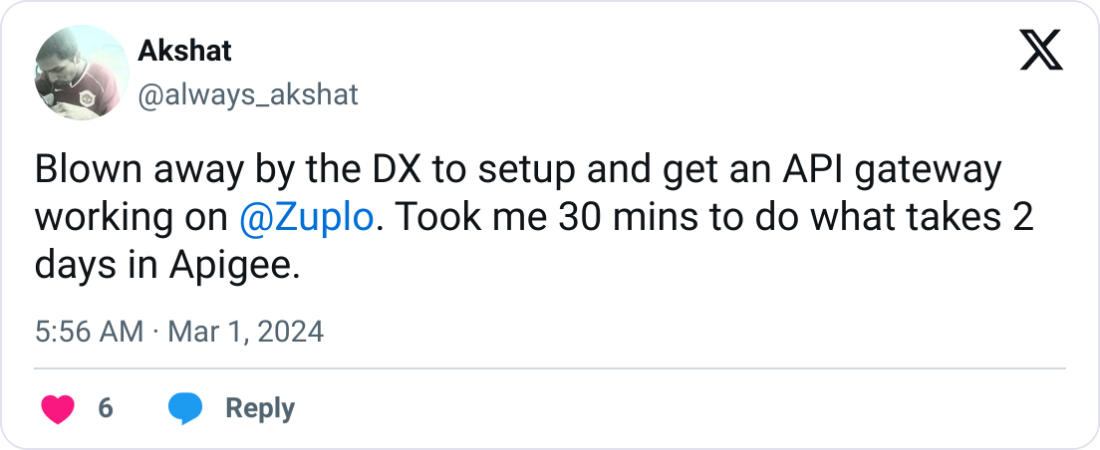APIs serve as the critical backbone of modern applications. However, as user bases expand globally, optimizing API performance using CDN becomes increasingly important. Response times lag, servers strain under heavy loads, and user experiences suffer—particularly for those geographically distant from your infrastructure.
Content Delivery Networks (CDNs) offer a powerful solution to these challenges. Properly implementing regional endpoints can cut latency by a staggering 40-70% compared to single-region deployments. By optimizing API performance using CDN, you can transform how your APIs perform at global scale. Let's dive into how you can supercharge your APIs with the right CDN strategy.
- CDNs to the Rescue: How They Revolutionize API Performance
- Smart Caching Strategies: Making Your APIs Lightning Fast
- Edge Computing Magic: Processing Closer to Your Users
- CDN Showdown: Picking the Perfect Provider for Your Needs
- Fortress CDN: Building Security and Reliability Into Your Setup
- Performance Tuning: Squeezing Every Millisecond From Your Setup
- Fixing What's Broken: Troubleshooting Common CDN Issues
- API Architecture Matchmaking: Optimizing CDNs for Different API Types
- Cost Efficiency: Maximizing Value While Minimizing Spend
- Rocket-Powered APIs: Unleash Global Performance Today
CDNs to the Rescue: How They Revolutionize API Performance#
CDNs do much more than just cache static content—they fundamentally transform how your APIs deliver data across the globe. Let's explore how they work their magic.
Definition and Role of CDNs#
A Content Delivery Network (CDN) is a distributed network of servers strategically positioned globally to optimize content delivery. While CDNs are commonly associated with caching static content, they offer significant benefits for APIs too.
CDNs enhance performance through three key mechanisms:
- Proximity to Users: CDN servers positioned closer to end-users reduce round-trip times and latency, creating an almost local feel for users regardless of where your actual servers live.
- Networking Optimizations: Sophisticated techniques enable faster content delivery by optimizing routes and reducing hops between servers.
- Efficient Connection Management: Connections terminate at nearby CDN servers, leveraging persistent connections with origin servers to minimize handshake overhead.
API Performance Challenges#
APIs face several performance challenges that can make or break user experience:
- Latency Issues: Slow response times frustrate users and reduce engagement, often causing them to abandon your application entirely.
- Variable Traffic Patterns: Sudden request spikes can overwhelm backend services, leading to service degradation at the worst possible times.
- Global Distribution Challenges: Serving users across regions can result in inconsistent performance, creating a "fast lane/slow lane" experience depending on user location.
CDNs help mitigate these challenges by reducing latency, distributing API requests, providing regional endpoints, and optimizing connections—making your APIs feel responsive no matter where your users are located.
Smart Caching Strategies: Making Your APIs Lightning Fast#
Effective caching is more art than science, requiring thoughtful approaches to different types of content. Here's how to implement caching strategies that dramatically improve performance.
Dynamic API Content Caching#
Different types of data require different caching strategies. A multi-tiered caching system combines various methods optimized for specific use cases:
- Product listings change infrequently and can be aggressively cached with TTL-based revalidation, keeping your catalog snappy without constant origin hits.
- AI-based recommendations require distinct approaches based on their
nature:
- Personalized recommendations need per-user caching to maintain relevance.
- General recommendations can be cached for specific time periods for defined user groups, balancing freshness with performance.
For example, when working with AI services, caching API responses can significantly improve performance while reducing costs.
As Stellate notes, modern websites utilize different caching layers for different parts of their applications—a strategy that applies beautifully to APIs, too. Implementing effective caching solutions can help manage dynamic content efficiently, ensuring both performance and data consistency.
Cache Invalidation and Data Consistency#
Maintaining data consistency is crucial when implementing caching. When source data changes, the cache must be updated to reflect those changes. Meta engineers improved their cache consistency from six nines to ten nines through careful invalidation strategies, as detailed in their engineering blog.
Three primary approaches to cache invalidation help maintain data consistency without sacrificing performance:
- Time-based Expiration (TTL): Simple but can lead to unnecessary server requests when content hasn't changed.
- Stale-While-Revalidate (SWR): Allows clients to use potentially stale data while refreshing the cache in the background, providing the best of both worlds.
- Event-based Invalidation: Triggers cache invalidation when relevant data changes occur, ensuring users always see the most current information.
Edge Computing Magic: Processing Closer to Your Users#

Edge computing represents the next evolution in API delivery, enabling your API business to operate on the worldwide edge, bringing compute power directly to where your users are. Let's see how it transforms performance.
Edge Computing Capabilities#
Edge computing within CDNs processes API requests at network edges—physically closer to end users, creating several powerful benefits:
- Reduced Latency: Connection termination close to users minimizes overhead, making your APIs feel almost local regardless of where your actual servers reside.
- Pre-warmed Connections: Persistent connections with origin servers allow maximum throughput, eliminating the handshake tax that slows down traditional setups.
- Optimized Data Pathways: Traffic routes through strategically positioned edge servers, avoiding internet congestion that plagues direct connections.
Even uncacheable API requests benefit from edge computing through more efficient processing—it's like having mini data centers stationed around the world just for your API traffic.
Understanding edge computing best practices is essential to see how they transform performance.

Over 10,000 developers trust Zuplo to secure, document, and monetize their APIs
Learn MoreIntegrating Edge-based Architecture#
As we mentioned earlier, the simple act of placing APIs in the same region as users can reduce latency by up to 70% compared to single-region setups. When configured properly, a CDN with edge computing capabilities directs all API requests through the edge network, significantly reducing turnaround time while minimizing origin infrastructure load. It's like having local API servers everywhere without the headache of managing global infrastructure.
CDN Showdown: Picking the Perfect Provider for Your Needs#

Not all CDNs are created equal, and choosing the right one can make a dramatic difference in performance. Here's how to navigate the selection process. Various CDNs offer different features and configuration options. For instance, setting up an Akamai CDN might involve understanding specific Akamai CDN configuration guidelines.
Performance Metrics and Benchmarks#
Throughput provides a more comprehensive picture than isolated metrics like latency. While low-latency seems desirable, it becomes meaningless if accompanied by high packet loss—much like having a sports car that breaks down every few miles.
When comparing CDN providers, focus on 90th percentile metrics rather than averages to understand performance during adverse conditions. Top CDNs differentiate themselves through optimized TCP stacks that account for modern network realities, not just ideal conditions.
Decision-Making Framework#
When selecting a CDN provider, consider these critical factors to find the best match for your needs:
- Performance Tradeoffs: Balance between minimizing latency and maximizing cache hit ratio to optimize for your specific use case.
- Geographical Coverage: Assess provider presence in your target audience regions to ensure consistent performance worldwide.
- Monitoring Capabilities: Evaluate performance monitoring effectiveness to ensure you can quickly detect and resolve issues.
- Redundancy Requirements: Consider failover scenarios and dual CDN setups for mission-critical applications.
- Additional Features: Assess security, pricing, support, and onboarding processes to find the complete package.
Fortress CDN: Building Security and Reliability Into Your Setup#
A fast API isn't worth much if it's vulnerable or unreliable. Here's how to ensure your CDN implementation is both secure and dependable.
Rate Limiting and DDoS Protection#
Rate limiting prevents abuse while maintaining optimal performance. Following API rate-limiting best practices helps control request volumes with various threshold types:
| Threshold Type | Example | Purpose |
|---|---|---|
| Per User | Twitter: 300 tweets/3 hours | Prevents excessive usage by individual users |
| Per IP | Address Region-based quotas | Protects against distributed attacks from multiple sources |
| Per Application | 10,000 requests/day (free tier) | Supports tiered service plans while managing overall load |
Implementing API rate-limiting effectively requires a nuanced approach. Understanding the thresholds and types of rate limiting is crucial for maintaining both security and usability.
CDNs provide built-in DDoS protection. Consider integrating a Web Application Firewall (WAF) for additional security, creating multiple layers of protection for your APIs. For AWS users, securing APIs with AWS Shield offers advanced DDoS protection integrated with your cloud infrastructure.
In addition to rate limiting and DDoS protection, implementing robust API key authentication is essential for securing your APIs and controlling access.
Monitoring and Redundancy#
Implement real-time monitoring tools to track performance and receive instant alerts when things go sideways. Enable logging for all CDN-enabled backends and consider implementing Real User Monitoring (RUM) for comprehensive insights into actual user experiences.
Leveraging specific CDN features can further enhance your setup. For instance, implementing Cloudflare caching strategies can optimize both performance and security.
For enhanced redundancy, consider dual CDN providers that can keep your APIs running even if one provider experiences issues. Advanced traffic management systems like NS1 Pulsar can automatically route traffic to the best-performing provider, ensuring users always get the best possible experience.
Performance Tuning: Squeezing Every Millisecond From Your Setup#
Fine-tuning your CDN configuration can yield dramatic performance improvements. Here's how to optimize for peak efficiency.
Monitoring and Optimization Techniques#
Start with robust monitoring to understand your current performance:
- Enable Detailed Logging: Provides crucial data about request patterns and errors that can guide optimization efforts.
- Track Cache Hit Ratio: Aim for 90% for optimal performance, as this directly impacts origin load and user experience.
- Utilize Monitoring Dashboards: Most CDN providers offer custom dashboards that highlight opportunities for improvement.
- Implement Real User Monitoring: Collects performance data from actual users, showing you how your APIs perform in the wild.
Then focus on optimization techniques that deliver real-world performance gains:
- Aggressive Caching: Cache both static and dynamic content where possible to minimize origin requests.
- Enable Performance Enhancements: Leverage Brotli compression, TLS 1.3, and modern protocols like HTTP/3 for faster transfers.
- Consider Dual CDN Deployments: For mission-critical APIs that demand consistent performance worldwide.
- Regular Load Testing: Identify bottlenecks before they impact users, allowing preemptive optimization.
For troubleshooting, utilize diagnostic tools like Traceroute, MTR, and webpagetest.org to identify exactly where performance issues occur.
Fixing What's Broken: Troubleshooting Common CDN Issues#
Even the best implementations occasionally run into problems. Here's how to diagnose and fix common CDN issues.
Common CDN Problems#
Primary challenges you might encounter include:
- Latency: Leading to slow loading times and user abandonment, often caused by misconfigured routing or cache settings.
- Cache Misses: From incorrectly configured cache settings, resulting in unnecessary origin requests that slow everything down.
- Content Delivery Failures: From CDN settings or connectivity problems that prevent content from reaching users.
Issues typically stem from CDN configuration errors or network/ISP problems, but the good news is they're usually fixable with the right approach.
Diagnostic Strategies#
Implement these strategies to quickly identify and resolve CDN problems:
- Analyze CDN Logs: Identify errors or anomalies that point to specific configuration issues.
- Use Real-Time Monitoring: Spot and address issues as they happen, before they impact large numbers of users.
- Test From Different Locations: Identify region-specific issues that might only affect certain user segments.
- Check Configuration Settings: Ensure alignment with content delivery needs and best practices.
- Utilize Diagnostic Tools: Like traceroute and webpagetest.org to pinpoint exactly where issues occur.
Don't overlook your CDN provider's support and community resources for troubleshooting assistance—they've seen most problems before and can often suggest quick fixes.
API Architecture Matchmaking: Optimizing CDNs for Different API Types#
Different API architectures require different CDN strategies. Here's how to tailor your approach to your specific API type.
REST, GraphQL, and gRPC Configurations#
REST APIs
REST APIs work beautifully with CDNs due to their resource-oriented nature. To optimize REST APIs with CDNs:
- Create DNS records pointing to origin servers to properly route traffic.
- Enforce TLS encryption to protect data in transit.
- Configure origin settings to maintain proper connections.
- Set appropriate caching rules based on API responses, leveraging cache-control headers.
GraphQL APIs
GraphQL presents unique caching challenges due to its query-based nature, but specialized solutions exist:
- Configure field-level caching rather than endpoint-level for more granular control.
- Use specialized solutions like Stellate designed specifically for GraphQL.
- Implement robust monitoring to identify cache hit/miss patterns.
- Develop clear cache invalidation strategies based on data mutations.
gRPC APIs
gRPC's binary protocol and streaming capabilities require special consideration:
- Ensure CDN supports HTTP/2 and, ideally, HTTP/3 to handle gRPC traffic properly.
- Focus on load balancing rather than traditional caching for improved performance.
- Implement negative caching for error responses to reduce origin load.
- Consider using a gRPC-to-REST gateway if needed to leverage broader CDN capabilities.
Cost Efficiency: Maximizing Value While Minimizing Spend#
Performance doesn't have to break the bank. Here are strategies to optimize costs while maintaining excellent performance.
Cost-Optimization Strategies for High-volume APIs#
For high-volume APIs, consider these approaches to keep costs under control:
- Implementing Regional Endpoints: Reduces latency and cross-region data transfer costs by serving users from their nearest location.
- Optimizing Cache Settings: Increases cache hit ratios, reducing origin loads and associated costs while improving performance.
- Setting Appropriate TTL Values: Based on content update frequency to minimize origin requests without serving stale data.
For cost-efficient deployment, consider these infrastructure choices:
- External Application Load Balancers to distribute traffic efficiently.
- Appropriate backend types (Serverless NEGs, Instance Groups, Cloud Storage) matched to your specific workload.
- Leveraging existing CDN services rather than building your own infrastructure, saving both time and money.
Rocket-Powered APIs: Unleash Global Performance Today#
CDN acceleration can dramatically transform your API performance through reduced latency, improved cache hit ratios, and faster content delivery—even for traditionally uncacheable resources. A well-configured CDN not only reduces load times and bounce rates but increases user engagement across the globe.
Zuplo makes implementing these advanced CDN strategies straightforward, with built-in tools designed specifically for API acceleration. Start building lightning-fast, globally optimized APIs today — reach out to learn more!